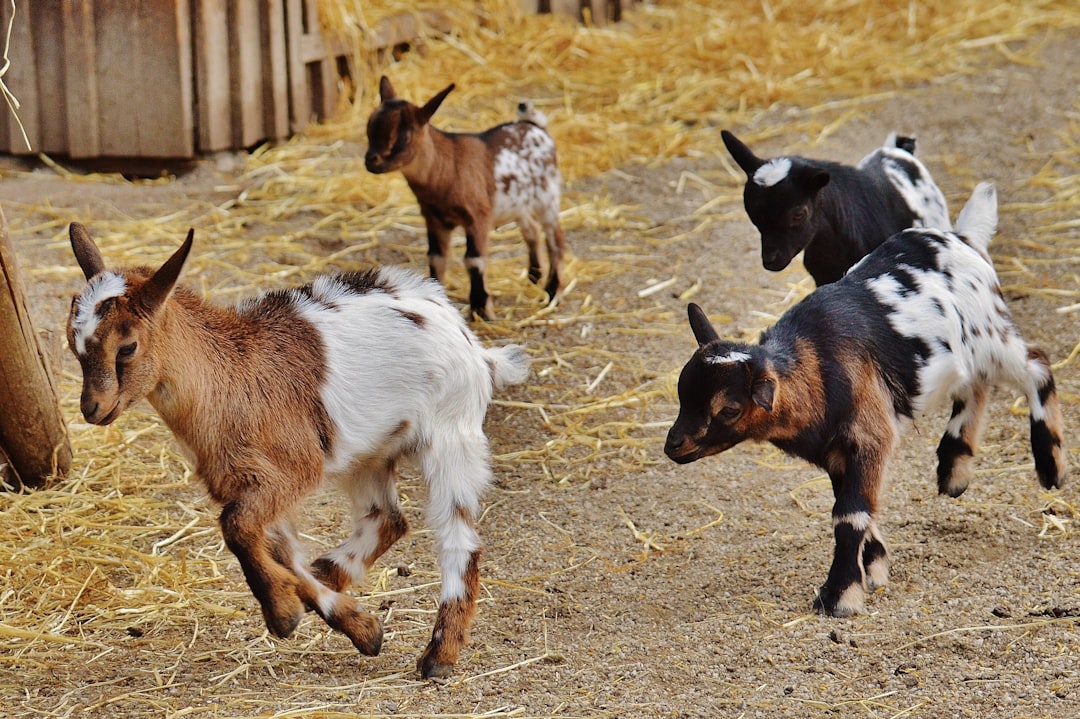Goats are incredibly versatile animals, contributing to agriculture in multiple ways, including milk production, meat supply, fiber production, and land management through brush control. This post explores various goat breeds renowned for their specific uses, highlighting their characteristics and global distribution.
Milk Production
Goats are a significant source of milk globally, particularly in regions where dairy cattle are less common. Some of the top dairy goat breeds include:
-
Saanen: Originating from Switzerland, Saanen goats are recognized as one of the highest milk-producing breeds, with an average annual production of 1285 kg. Their milk is used for fluid consumption, yogurt, and cheese production.
-
Alpine: Known for their excellent milking ability, Alpine goats are popular worldwide, especially in France, where they dominate dairy goat breeding. They produce around 950 kg of milk per lactation.
-
Toggenburg: This breed is the oldest known dairy goat breed and is widely distributed across continents. Toggenburgs are valued for their consistent milk production, yielding about 740 kg per lactation.
Meat Production
Goats are an important source of meat in many parts of the world, particularly in regions where beef is less common or culturally preferred.
-
Boer: Originating from South Africa, Boer goats are renowned for their fast growth rate and high-quality meat. They are widely used in crossbreeding programs to enhance meat production in other breeds.
-
Kiko: Developed in New Zealand, Kiko goats are known for their hardiness and efficient feed conversion, making them ideal for meat production in challenging environments.
-
Spanish Goat: This breed is popular in the United States for its adaptability and meat quality. Spanish goats are often used in crossbreeding to improve the hardiness of other breeds.
Fiber Production
While not as prominent as sheep or alpacas, some goat breeds are valued for their fiber.
-
Angora: Originating from Turkey, Angora goats produce mohair, a soft, silk-like fiber used in clothing and textiles. They are widely raised in South Africa and the United States.
-
Cashmere: Cashmere goats are primarily raised for their fine, soft undercoat, which is used to make high-quality cashmere clothing. They are found mainly in Mongolia and China.
Brush Control
Goats are often used for land management due to their ability to control unwanted vegetation.
-
Spanish Goat: In addition to meat production, Spanish goats are also used for brush control due to their aggressive browsing habits.
-
Kiko: Kikos are also used for land management, as they efficiently clear pastures of unwanted vegetation, helping to prevent wildfires and maintain ecosystem health.
Conclusion
Goats are versatile animals that contribute significantly to agriculture through milk, meat, fiber, and land management. By understanding the characteristics and uses of different breeds, farmers can optimize their operations to meet specific market demands. As global food systems continue to evolve, the role of goats in sustainable agriculture will remain vital.
Citations:
- https://ruminants.ceva.pro/goat-breeds
- https://www.youtube.com/watch?v=vmZZkbS4raE
- https://www.bivatec.com/blog/the-top-10-goat-breeds-for-milk-production
- https://www.agriculture.com/11-popular-goat-breeds-7538100
- https://www.farming.express/en/2022/10/dairy-goat-breeds/
- https://extension.psu.edu/dairy-goat-production
- https://www.e3s-conferences.org/articles/e3sconf/pdf/2022/02/e3sconf_icesai2021_00009.pdf
- https://pmc.ncbi.nlm.nih.gov/articles/PMC6668863/

Comments
No comments yet. Be the first to comment!
You must be logged in to comment. Login